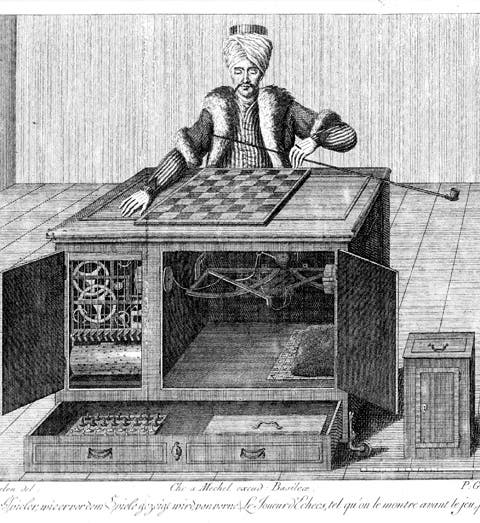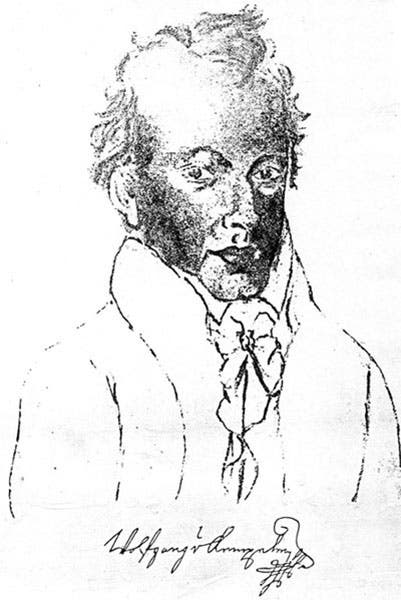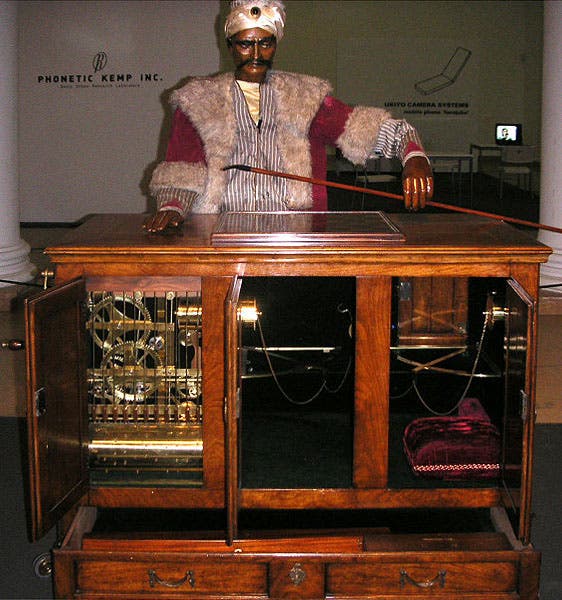Scientist of the Day - Wolfgang von Kempelen
Wolfgang Ritter von Kempelen, an Austrian inventor, was born Jan. 23, 1734. In 1770, von Kempelen unveiled one of the most famous automatons in history, a chess-playing machine known as "The Turk". The automaton, as one can see from a contemporary engraving (first image), consisted of a life-size Turk, wearing a turban, sitting before a large enclosed desk, on top of which was a chessboard. The Turk, wielding a long smoking pipe in one hand and moving pieces with the other, would play against human opponents, and beat them, and it did so for over 80 years, until it met its demise.
The desk had three doors in the front that von Kempelen would open before each performance, behind which one could see a complex array of rods and gears, supposedly the brains of the automaton. In fact, The Turk was an ingenious hoax--a pseudo-automaton. The Turk was controlled by a human "director", seated on a sliding chair down below, mechanically rigged so that no matter which door you opened, the operator was not to be seen. Since the Turk beat a number of good chess players, the operator had to be a master chess player himself, and many chess masters of the day are rumored to have been at the controls at one time or another. So it would seem that the fraudulent nature of the Turk was an open secret among the chess-masters community, who apparently treated it as a society of magicians would treat an illusion – a secret not to be revealed to the public.
The Turk came to the United States in 1826 (von Kempelen had died in 1804) and was seen in Richmond, Va., in 1835 by Edgar Allen Poe, who wrote an essay about it, "Maelzel's Chess Player" (Maelzel had inherited the Turk from von Kempelen), in which Poe claimed to have figured out the hoax. In truth, he had not. But others have, and a full-size facsimile was made some years ago by John Gaughan, a living master illusionist. We have not seen it operate, but a photograph of the reconstruction is available (third image). The Turk eventually ended up in Peale’s Museum in Philadelphia, where it was destroyed in a fire on July 5, 1854. We have a single surviving sketch of von Kempelen, supposedly a self-portrait (second image). Dr. William B. Ashworth, Jr., Consultant for the History of Science, Linda Hall Library and Associate Professor, Department of History, University of Missouri-Kansas City. Comments or corrections are welcome; please direct to ashworthw@umkc.edu.








